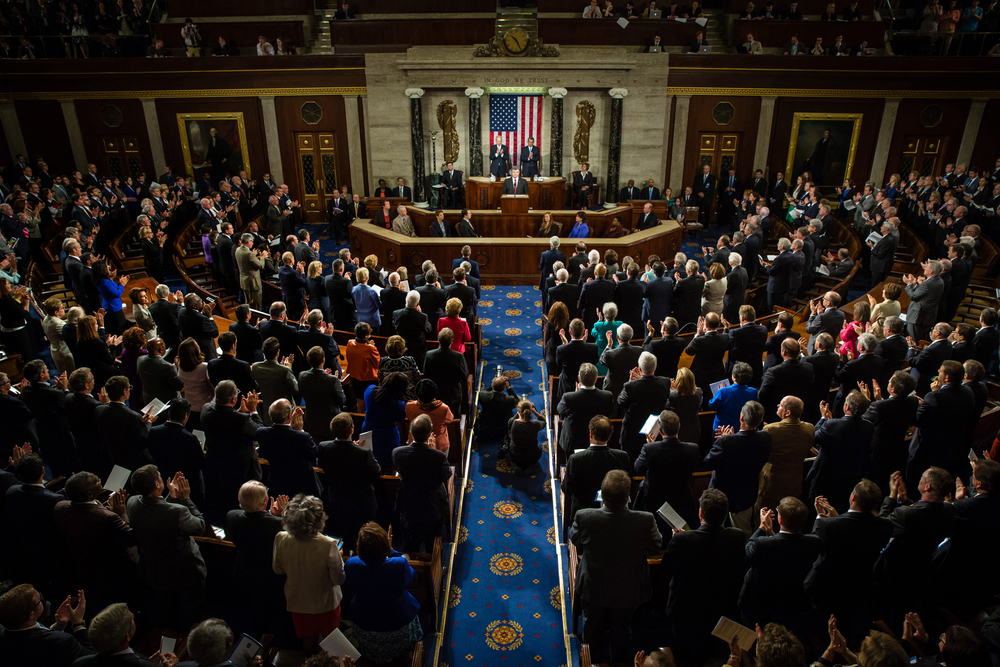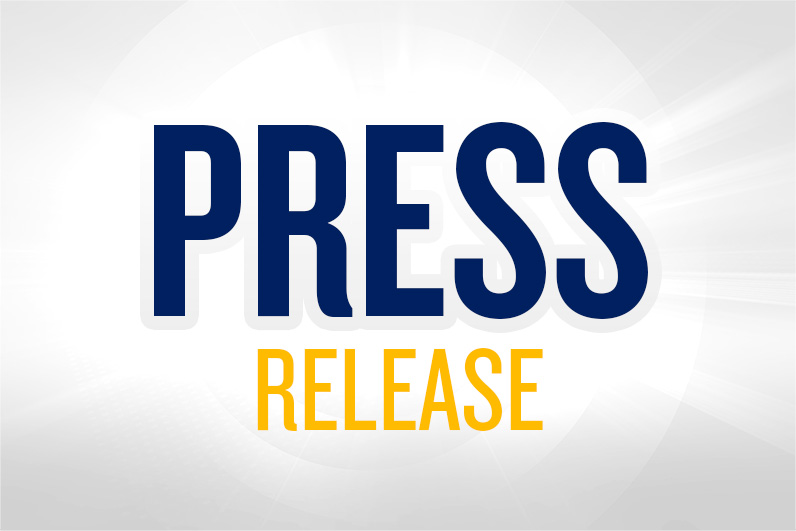
by Georgia Center for Opportunity | Jul 25, 2018
There’s an old saying that a rising tide lifts all boats. This seems to be true in today’s booming economy—with low unemployment rates at the state and national levels translating into historical lows in communities that often lag behind. For example, economic fortunes for African Americans are showing sustained signs of improvement, with the most recent June 2018 unemployment rate coming in at 6.5 percent, up slightly from May’s all-time low of 5.9 percent.
And while improving employment prospects are certainly encouraging signs for a community that continues to experience unacceptably disparities on most socioeconomic measures compared to other groups, a new study from the American Enterprise Institute (AEI) offers even more evidence that African American men are making steady gains toward achieving the American Dream.
In Black Men Making It in America: The Engines of Economic Success for Black Men in America, well-known marriage and family researchers Brad Wilcox and Wendy Wang team up with fatherhood expert Ronald Mincy to examine the institutional engines that form the foundation for black male success.
Some key takeaways from this AEI report:
- The economic standing of black men has improved dramatically, with 57% now in the middle class or higher as adults today—up from 38% in 1960. Even better, the share of black men who are poor has fallen from 41% in 1960 to 18% in 2016.
- While higher education and full-time work are powerful engines of success for black men in America, so, too, is participation in institutions such as marriage, church, and the military.
- Contact with the criminal justice system remains a significant obstacle to success for black men. By midlife, only 28% of black men who had contact with the criminal justice system when they were young have moved into the middle or upper class, compared to 52% of black men who had no contact with the criminal justice system at a younger age.
Here at Georgia Center for Opportunity, we believe in a simple concept called the “success sequence,” which says that a good education leads to a stable job—which in turn leads to a flourishing home life and personal success.
Clearly, this AEI report reinforces GCO programs like Hiring Well, Doing Good and our Prisoner Reentry Initiative, which aim to remove barriers to opportunity and put Georgians back on a rising tide—or sequence—of success that lifts individuals, then families, out of generational poverty into flourishing communities.

by Georgia Center for Opportunity | Jul 12, 2018
By now, you’ve probably seen the headlines and read the stories—America’s economy is booming. Just last month the national unemployment figures came in for May and the rate dipped to 3.8%—a level that ties a half-century low dating to 1969, and which economists consider to be “full employment.”
Equally encouraging is the fact that the current economic recovery is reaching communities that often lag behind. For example, the May unemployment rate for African-Americans hit an all-time low of 5.9%. For Hispanics, it was 4.9%—a tick up from its historic low of 4.8% in April. Here in Georgia the rate was also impressive by historical standards, with May unemployment dropping to 4.2%.
But with all of this good news comes some challenges. With our economy currently humming along at full employment, we’re facing tight labor markets and a demand for workers that outstrips supply. Even more concerning, we’re seeing a shrinking supply of the skilled labor needed to keep the economic engines firing on all cylinders.
So what’s the solution to producing a workforce with the needed skills to keep the economy on track? We believe the key is developing educational solutions that deliver a reliable pipeline of workers with appropriate skills to match the demands of a rapidly changing workforce moving into the second quarter of the 21st century.
For example, by the year 2025, 60% of jobs in Georgia will require post-secondary education, such as a graduate certificate, associate’s degree, or bachelor’s degree. However, only about 47% of Georgia’s potential workforce currently meets these educational criteria, creating a need for 250,000 additional credentialed or degreed employment candidates by the year 2025.
Clearly, there’s a gap we must bridge between education and jobs. Even the federal government recognizes this critical need, with the Trump Administration recently announcing a proposal to combine the departments of Education and Labor.
Here in Georgia, the Georgia Center for Opportunity is taking the lead in creating opportunities for delivering quality education opportunities that meet fast-changing workforce needs. On July 27, we’re partnering with the Community Foundation for Northeast Georgia to host “Staying the Course in College”—a half-day community conversation at Gwinnett Technical College on the importance of completing college.
Please join us as we discuss two of the biggest economic threats facing Georgia today—improving access to affordable college and meeting workforce needs. Admission is free, but registration is required to attend. Click here for details.

by Georgia Center for Opportunity | Jul 11, 2018
By Erik Randolph, GCO Contributing Scholar
Last December, President Trump signed into law changes to the federal income tax. One of the supposed achievements was the elimination of the marriage penalty. This is not entirely correct.
I recently analyzed marriage penalties for the Georgia Center for Opportunity (GCO). Summarized in a policy briefing, my analysis found that Congress only succeeded in eliminating the marriage penalty if a couple does not have children. If they do have children, the marriage penalty is alive and well.
Certainly, it is a positive change that two individuals without children can now marry without having a tax shock when they file their federal income taxes. This is a fairer system ensuring they do not have a higher tax bill just because they got married. Congress can be proud of this achievement.
However, it’s unfortunate that the tax code continues to punish couples with children.
To make matters worse, the poor face an additional marriage penalty if they receive food stamps, and it doesn’t matter if they have kids or not.
The recent analysis I conducted on the food stamp marriage penalty relied on computations of 256 wage combinations of what two individuals might earn. These combinations ranged from earning nothing up to earning the national median wage. For every wage combination considered, the food stamp program discourages marriage.
The good news is that Congress has an opportunity right now to fix the marriage penalty in the food stamp program. The U.S. Senate and House of Representatives have two versions of the Farm Bill to consider. The final version that will come out of the conference committee could eliminate the marriage penalty in the food stamp program.
There are two approaches Congress can take. The first is to get into the details and redesign the food stamp factors that cause the marriage penalty. This approach is lengthier, and given the urgency of passing the Farm Bill, it may be less appealing.
The simpler approach would be to give the states the authority, under the direction of the U.S. Department of Agriculture, to make adjustments to the food stamp program to eliminate the marriage penalty. Although the food stamp program is a federal program, the states administer the program and pay for half of the administrative costs.
Prior research I did for GCO demonstrates that the more welfare programs an individual or family receives, the greater the likelihood for marriage penalties and the greater the severity of those penalties. Therefore, it makes sense to allow states that administer most welfare programs to address the marriage penalties in a coordinated manner.
Once they’ve fixed the marriage penalty in the food stamp program, Congress should revisit the tax code to fix the lingering marriage penalty there. It is unfair for single individuals with children who want to marry to face tax penalties if they do so. Equally unfair is that married couples with children end up paying more in federal income taxes than they would if they were unmarried and living together.
Combined, the penalties provide a strong and perverse disincentive to couples with children to remain unmarried. It is public policy directly opposed to the behaviors we know are most likely to lift people out of poverty and it needs to end. Congress has a chance to start addressing the problem in the Farm Bill, and it’s an opportunity they shouldn’t miss.
For more on GCO’s recent research on the marriage penalty, check out “How the Food Stamp Program and the U.S. Tax Code Continue to Penalize Marriage.”

by Georgia Center for Opportunity | Jul 3, 2018
What goal is more important than ensuring our most vulnerable students have the best shot at success? That’s what Georgia’s Special Needs Scholarship Program is all about. Now in its 11th year, the scholarship enables children who have special needs to transfer to another school to better meet their unique educational needs.
Over 4,500 students benefited from the program during the 2016-2017 school year, with scholarships averaging $5,722 per student.
But despite the success of the program, there is a lot more to be done. A House study committee convened in mid-June to consider updates to the program, specifically revisions contained in House Bill 801. HB 801 would make two significant updates to the Special Needs Scholarship Program—first, by giving parents more flexibility in how to best use scholarship funds on behalf of their child, and second by opening up scholarship funds to home-educated students.
In the first case, the bill would allow parents to use scholarship dollars for ongoing therapies, tutoring, or specialized equipment. This, in turn, would empower children with special needs to excel in the classroom and beyond.
Sometimes, students with special needs are lagging behind in their traditional public school environments. So, when they transition to a private school through the scholarship, they have to play catch up to get fully up-to-speed. Allowing parents to use scholarship funds for approved non-tuition expenses would go a long way toward helping these students stay on track at their new schools.
This type of change makes sense: Public schools are already required to provide in-house speech, occupational, and physical therapy for children with special needs. Granting scholarship recipients the same flexibility is wise.
At the study committee hearing on HB 801, parents made emotional appeals, asking lawmakers to open scholarship funds to homeschool families as well:
A former Gwinnett teacher now homeschooling her adopted children said they would benefit if the scholarship was opened to homeschoolers for tutoring and therapies, including speech, physical, occupational and equine. Her seven children face multiple struggles related to the chaos of their early lives and, in some cases, fetal alcohol syndrome and visual impairments, that render a traditional classroom unworkable, she explained.
An Atlanta mother said she pulled her bright daughter with autism out of a public middle school because the girl grew anxious and overwhelmed in such a big setting. Her daughter’s therapist recommended homeschooling to alleviate the anxiety. The mother’s goal is to homeschool now and then enroll her daughter in a small, flexible high school. She asked lawmakers to drop the requirement that students only qualify for the voucher after a full year in public school.
The Special Needs Scholarship Program is working for Georgia families who need help the most. But that doesn’t mean there isn’t room for improvement. By making these two changes, lawmakers would open up the scholarship program to hundreds of additional families in need of real educational options.

by Georgia Center for Opportunity | Jun 11, 2018
Imagine the challenge of raising two children with special needs. That’s the task that Jan—a small business owner in Georgia—faces in bringing up her two girls. Katie has ADHD, dyslexia, and autism spectrum disorder, and Jessica has an auditory processing disorder and ADHD.
But as Jan has discovered, while raising two children with special needs presents challenges, it also presents unique opportunities. Both Katie and Jessica were caught in a local public-school system that wasn’t meeting their needs. In fact, teachers told Jan that there was nothing they could do to help Katie—and that she would never learn to read or write—and that Jessica would never be able to pass state tests.
“I remember all the days at the bus stop crying and just telling my daughters, ‘We just have to make it through the end of the year,’” Jan shared. “If you don’t fit into the box, you fall through the cracks.”
Desperate for options, Jan turned to Georgia’s Special Needs Scholarship Program (the SB10 waiver). The program allows students with special needs to transfer to another school—traditional, charter, or authorized private—to better meet their unique educational needs. Since the scholarship program became law in 2007, nearly 25,000 students have participated, including 4,154 students for the 2015-2016 school year alone.
Due to funds through the scholarship, Katie started attending a small private school specifically designed for students with reading challenges. The results have been astounding: She now reads at grade level and is performing several grade levels above in math. Meanwhile, Jessica is excelling as well, taking advanced-level chemistry and performing several grade levels above in other subjects.
“Our experience at the private school is night and day,” Jan said. “I remember my daughter saying, ‘Mom, I don’t think I ever want to leave this school. Everyone here has a disability and it’s not a big deal.”
Today, Jan is dedicated to telling other families about the enormous blessing of the Georgia Special Needs Scholarship Program. Even so, she sees room for improvement in the program.
“If families were able to use the scholarship for other expenses needed for children with special needs—such as tutors and therapies—it would be incredibly helpful,” she said. “A lot of students also need additional help to get caught up because they were so far behind in their public schools. Flexibility in how the funding could be used would help support getting them on track at their private schools.”

by Georgia Center for Opportunity | Jun 8, 2018
ATLANTA – During the 2018 legislative session, the Georgia Center for Opportunity stood with parents across the state and fervently advocated for the expansion of the tax credit tuition scholarship program. In response to a leaked audio recording involving Lt. Governor Casey Cagle, GCO’s president and CEO released the following statement.
“Thousands of parents and educators in Georgia have fought long and hard so children can have access to education that fits their needs. And they are more than used to the frustration of backroom politics coming before students,” said Randy Hicks, President and CEO of the Georgia Center for Opportunity. “Here’s what we know about this bill: it improves the future of thousands of kids from lower-income families. That’s good policy. Because of how the bill is structured, it has the effect of increasing per-pupil dollars available in the public schools. That’s good policy. Finally, studies show that school choice improves student-teacher ratios as well as the academic performance of both the kids who leave and the kids who stay in the public schools. That’s good policy. Put it all together, you’ve got excellent policy.”
We are certainly prepared to remind Mr. Cagle and any other candidate that policies that improve the future for thousands of kids is exactly what good legislation looks like.”
###
Education scholars are available to speak to members of the media who have further questions regarding Georgia’s tax credit tuition scholarship program.
Georgia Center for Opportunity (GCO) is independent, non-partisan, and solutions-focused. Our team is dedicated to creating opportunities for a quality education, fulfilling work, and a healthy family life for all Georgians. To achieve our mission, we research ways to help remove barriers to opportunity in each of these pathways, promote our solutions to policymakers and the public, and help effective and innovative social enterprises deliver results in their communities.





